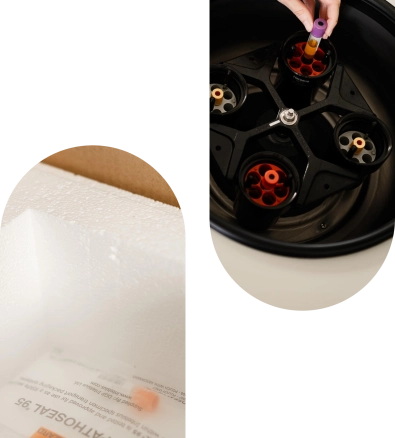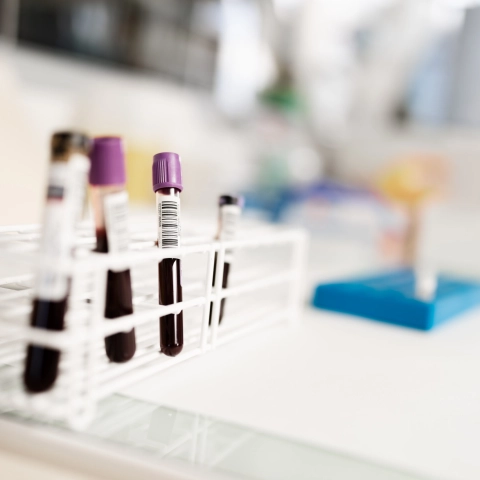What is clinical research?
Clinical research includes all scientific studies carried out on humans, with a view to evaluating the effectiveness and tolerance of a diagnostic method, treatment, care, medical device, or to increase medical knowledge.
The 2 main types of Clinical Research
There are 3 categories of RIPH, depending on whether or not the research involves an intervention on the person and depending on the risks incurred by the person taking part in it:
Category 1: The research involves an intervention on the person not justified by their usual care and not devoid of risks
🡪 Trial on a drug or an innovative surgical technique
Category 2: The research involves intervention on the person and involves only minimal risks and constraints
🡪 Low-risk blood sampling, non-invasive imaging
Category 3: The research does not involve intervention on the person and does not involve any risk
🡪 Risk-free and non-invasive sampling, medical imaging without radiation or injection of contrast product, additional questionnaires to the classic care procedure
RNIPH embraces two types of projects:
- research conducted using data already collected: retrospective data as part of care or during previous research
- reasearch that relates to data collected in the context of care: prospective data, over time or collected specifically for research without responding to the development of biological or medical knowledge


The 4 phases of drug development
Phase 1
Clinical trials of first administration to humans or trials on the fate of the drug in the body, making it possible to define the quantity and frequency of administration of a new therapy. These trials are carried out on a small number (10-50) of patients.
Phase 2
Clinical trials to clarify the activity and safety of the drug. These trials are carried out on a larger number of patients (50 to more than 100).
Phase 3
Trials to confirm the effectiveness and tolerance of the drug. These trials are often comparative, that is to say that the new drug is compared to the treatment usually prescribed. These trials take place on hundreds of patients, sometimes thousands.
The results of the first 3 phases of testing determine the marketing of the new treatment. If the new treatment obtains a marketing authorization (AMM), then a phase 4 can take place.
Phase 4
After the drug is placed on the market, phase 4 trials make it possible to monitor the effect of the drug in the long term, to detect possible rare side effects or misuse of the drug. These are so-called “real life” trials, in which the molecule studied is prescribed on a large scale.
Be involved in a clinical trial?
In the hematology department, you may be offered to participate in a RIPH-type clinical trial:
- Either because the standard treatment for the pathology you suffer from can be improved. In this case, you will be offered a trial comparing the reference treatment and a therapeutic strategy possibly giving better results;
- or because the previous treatment did not have the expected effect and your hematologist wants you to benefit from a new treatment that could potentially increase the chances of your disease responding.
The proposal to participate in a clinical trial follows a collegial discussion, during multidisciplinary consultation meetings (RCP) between health professionals (hematologists, nuclear scientists, biologists, anatomopathologists, etc.).
